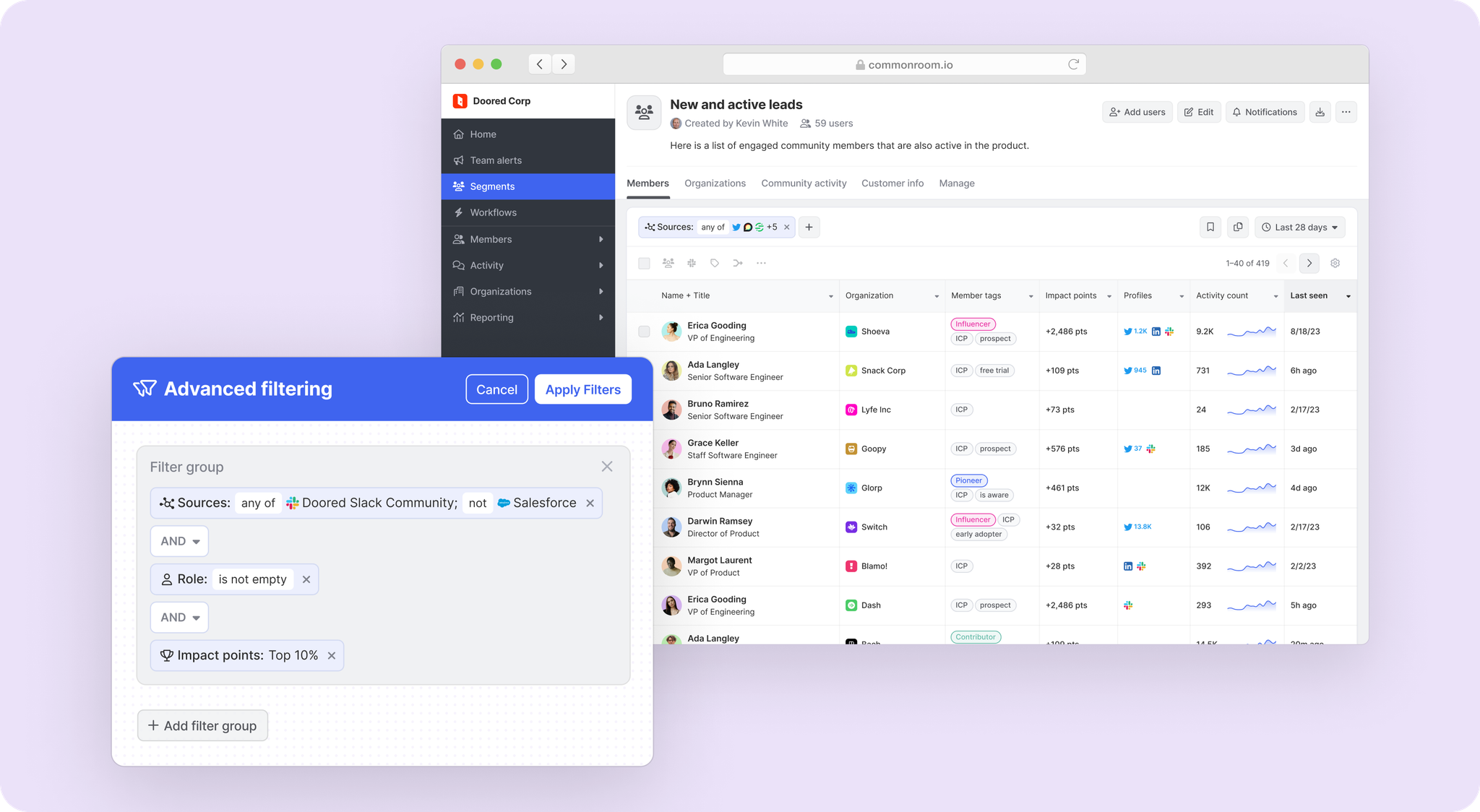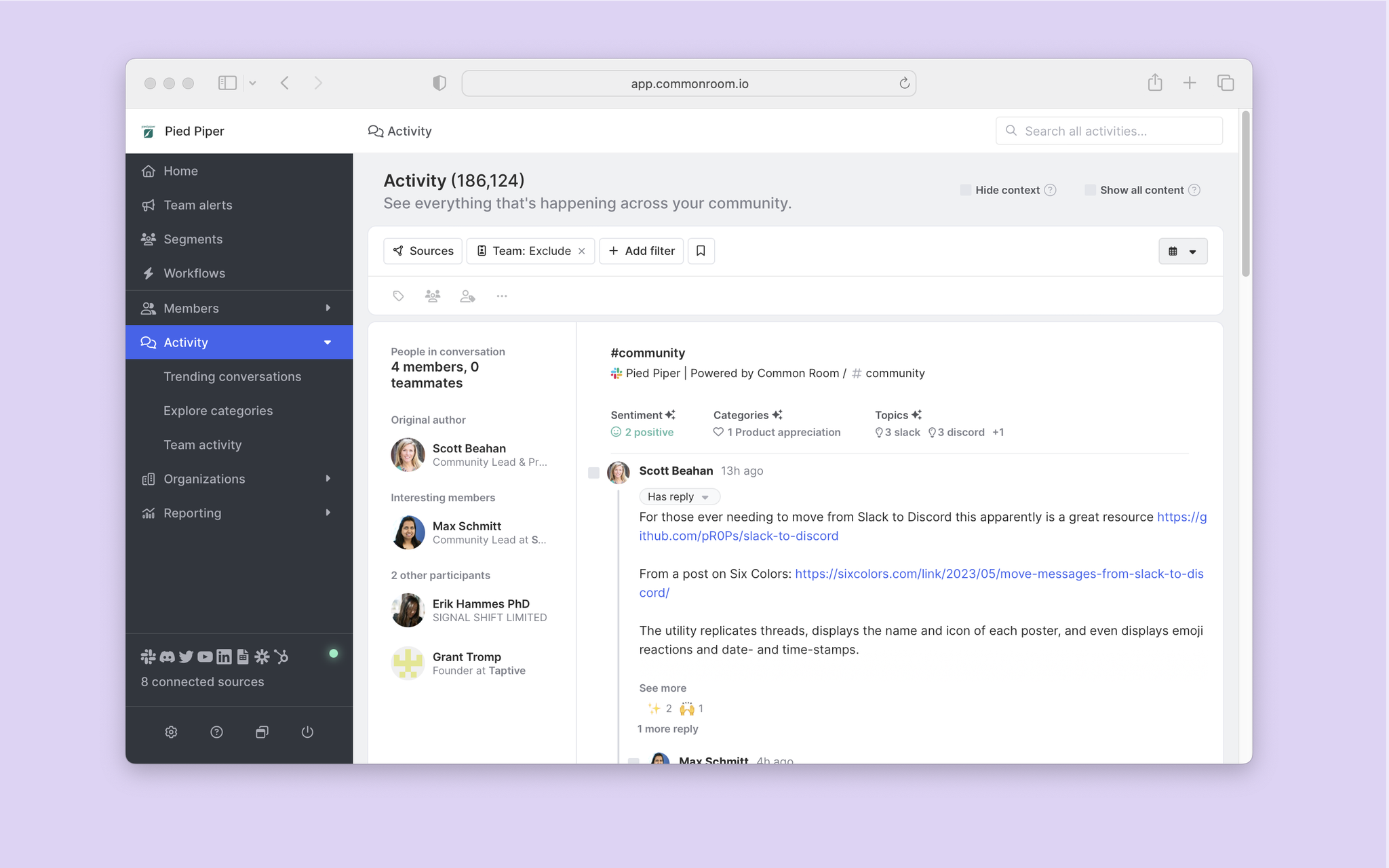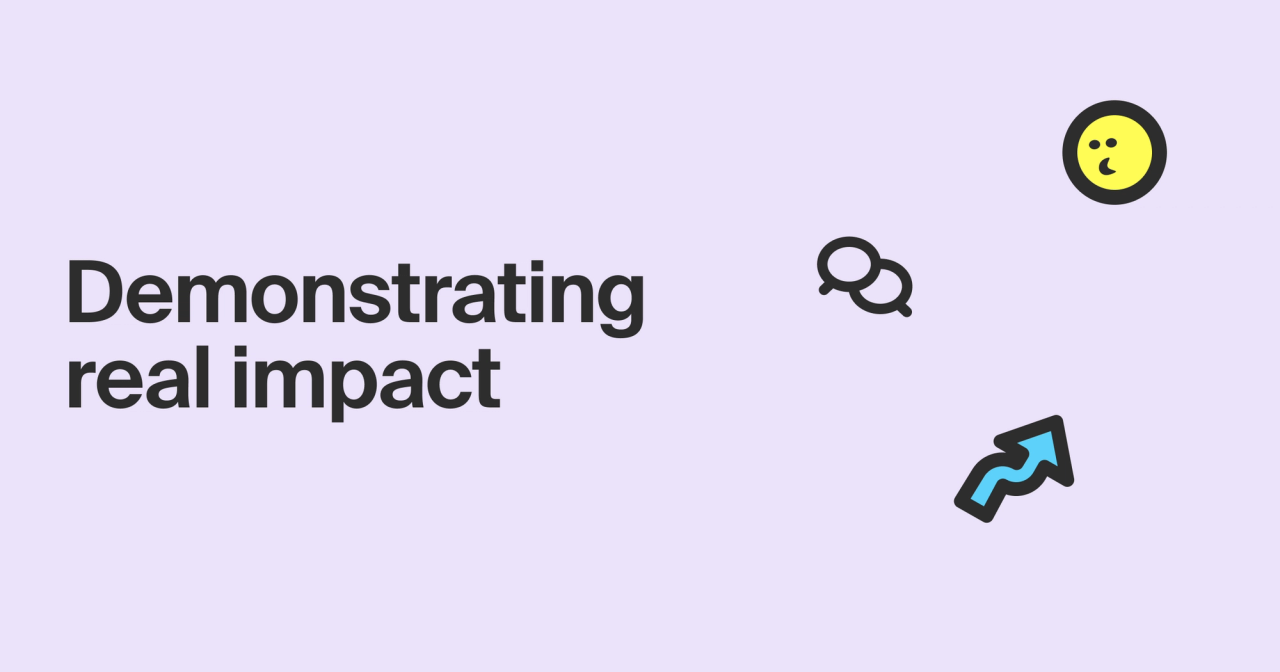Developer-focused companies need to quantify the impact of community with hard numbers.
But connecting the top of the funnel to bottom-line metrics requires visibility into hard-to-see user activity—and the ability to tie it to key business outcomes.
Learn how dev-first companies:
- Speed up and simplify community reporting
- Extract ROI insights related to commercial goals
- Connect dev awareness to dev conversion
You can’t measure what you can’t see
Struggling to connect community to business results is too often the norm.
Knowing what to measure is a challenge in and of itself. And even if teams decide which metrics to track, the process is typically monotonous and manual (aka rounding up stats across digital channels at the end of the month to try to demonstrate impact).
More than half of DevRel folks say they’re hungry for data that shows their impact on business objectives, according to the 2023 Developer Relations compensation & culture report. But it’s not just DevRel pros who are operating in the dark.
Dev-focused go-to-market teams—especially those working in the commercial open-source software space—struggle to link user activity in digital channels to pipeline growth and deals won.
With user activity spread across multiple dark-funnel channels—Slack, Discord, GitHub, Stack Overflow, Reddit, and so on—companies are left with siloed data, anonymous signals, and limited context.
This makes it extremely difficult to prove the revenue impact of community, let alone quickly. So instead of highlighting how it supports commercial objectives, companies settle for metrics that are disconnected from concrete business goals.
Square pegs don’t fit round holes
The trouble starts with tooling. It’s not that dev-focused companies lack tools for tracking and analyzing user activity—it’s that the tools they have aren’t built for business.
Whether teams are relying on native platforms, restrictive points solutions, or a combination of both, they’re unable to resolve user identities, track individuals and organizations across channels, and combine this information with their existing product and customer data. Comprehensive visibility into top-of-funnel activity—and the ability to analyze it quickly—stays out of reach.
To uncover the metrics that matter, prove business impact quickly, and connect the dots between user awareness and user action, you have to centralize all cross-channel activity, deanonymize your user base, and tie top-of-funnel activity to bottom-of-funnel results:
| Track the entire user journey | Spot the signal from the noise | Take action and automate |
|---|---|---|
Connect all your critical user touchpoints in a single location. | Identify and prioritize the people behind conversations and actions. | Simplify and scale how teams stay alerted to and follow up on activities. |
Our research uncovered that communities help companies triple feature adoption and close deals 20% faster.
But you need the right tools to prove it.
Demonstrate the real impact of community with Common Room
Common Room helps you centralize all relevant digital interaction data, gain full visibility into the people and companies interacting with you across channels, and automate analysis and reporting. That way dev-focused companies can:
- Get full visibility into all user activity across digital channels
- Slice and dice their data to focus on business-relevant metrics
- Connect community activity to real people and accounts
- Discover which tactics and strategies move business KPIs
- Track, analyze, and report on user activity at scale
The outcome is time saved on manual processes, more visibility into revenue impact, and access to strategic insights that improve business outcomes.
Here’s how dev-first companies do it:
Shine a light on developers
The first step is connecting all your data—digital interactions, product usage, and customer relationship—in Common Room. This data is automatically deanonymized and enriched to resolve user identities and create unified profiles for every individual and organization.
This gives you a bird’s eye view of all activity across channels, as well as key demographic and firmographic information related to users. You can dive deep into your community—and the people who comprise it—on demand and in real time.

🎤 "[Common Room’s] insights allow us to connect the dots between community and business impact, and make conversations around investing in community much easier."
—Marie Antons, Technical Community Manager at Harness
Uncover business insights
Next it’s time to track trends in the developer funnel based on the dimensions that matter most to your organization.
Filter and tag activity based on specific attributes and actions, such as geography, organization size, economic buyer fit, ideal customer profile, and more.
This helps you focus on the users you care about and monitor their journey from community member to paying customer.

“We spent time [...] understanding all of the different ways that we could articulate [the customer lifecycle] with Common Room. Now Common Room is powering all of our key community business metrics.”
—Anna Filippova, Senior Director of Community and Data at dbt Labs
You can use AI-powered natural language processing to automatically surface relevant activity, including product questions and support requests. Topics make it simple to track trends among users at scale, and machine-learning based sentiment detection spells out how users feel about different topics.
At the same time, you can dig into prebuilt and customizable reports that allow you to instantly track community metrics and share insights with stakeholders, such as activity by source, responsiveness, and more.
This helps you track and share key activities quickly, as well as get a pulse on how people feel about your company and product. It also makes it far easier to stay on top of product issues that require support and measure the responsiveness of your team.

“The information around responsiveness and understanding how much staff engagement we need is actually a really big deal. When I asked my colleague how much it helped decrease the support load for his team, the answer was, ‘Massively.’ That's a big business win.”
—Lena Vu Sawyer, Head of Community at Replit
Automate observation and engagement
Finally, make your insights actionable with commercial opportunity monitoring.
Create segments based on any combination of dimensions—from user activity to customer fit—and shepherd them to go-to-market teams.
This helps you track and take action on high-intent, high-fit community members.

🎤 "If I thought I was excited about Common Room, when the sales team first started using it, they were like: 'This is the best friend we've ever had.'"
—Ryland Goldstein, Head of Product at Temporal
You can also make sure all relevant teams stay notified of user activity via automated alerts.
This helps you make sure you never miss out on an opportunity and are always up to date on high-value activity.

Then you can follow up on those opportunities quickly and scalably with automated workflows.
This helps you organize user activity and follow up on it fast.

“The most valuable discovery that Common Room helped us make was understanding which large organizations have been using and are most engaged with our tools…. Common Room allows us to spot those opportunities and follow up accordingly.”
—Brendan O’Leary, Head of Community at ProjectDiscovery
You can’t prove return on investment—or increase it—if you’re in the dark.
Dev-first companies use Common Room to spotlight and strengthen the business impact of community—quickly and scalably.
Prove the ROI of community with Common Room
Ready to see how Common Room helps you illuminate and increase the business benefits of community?

